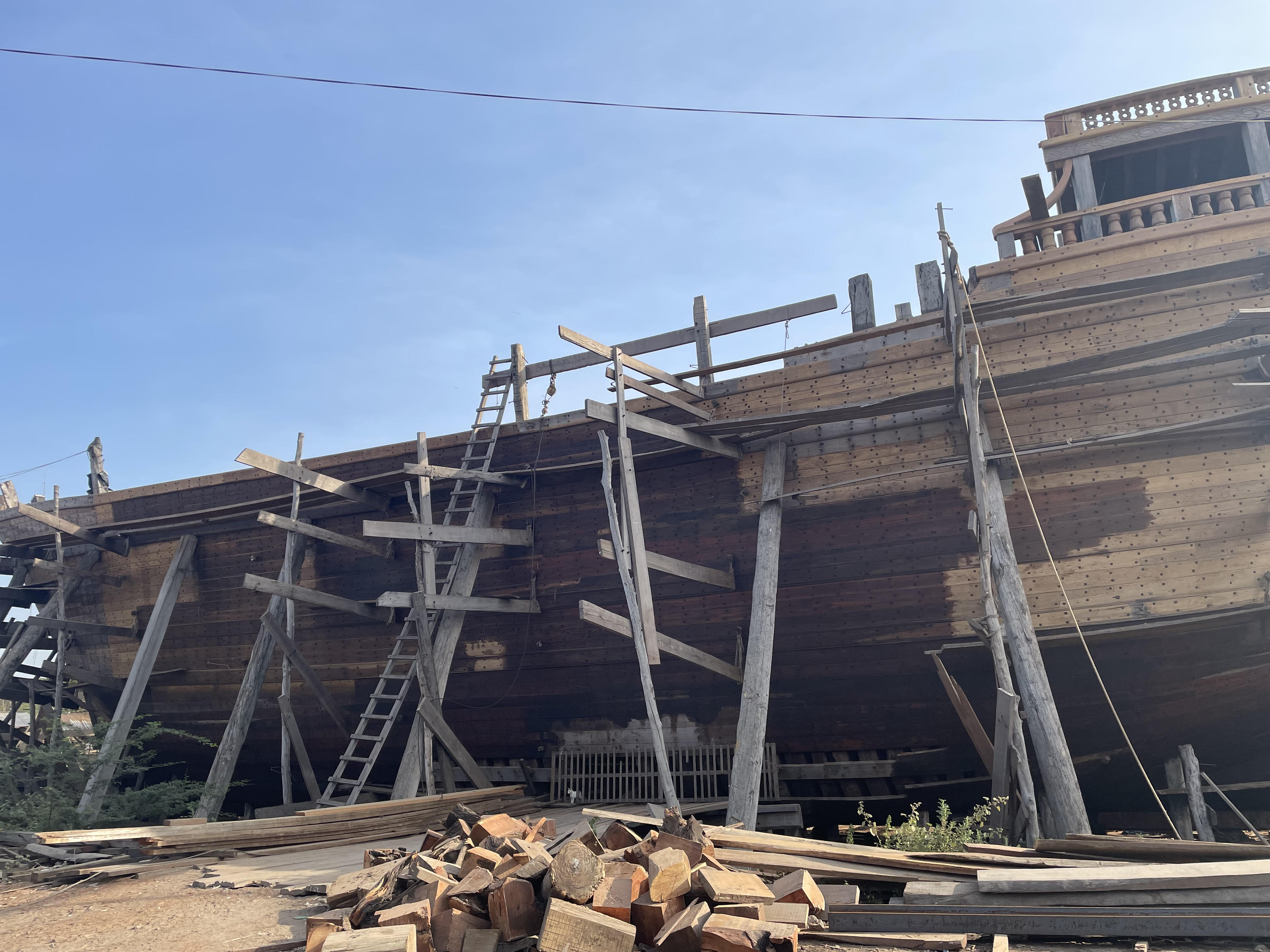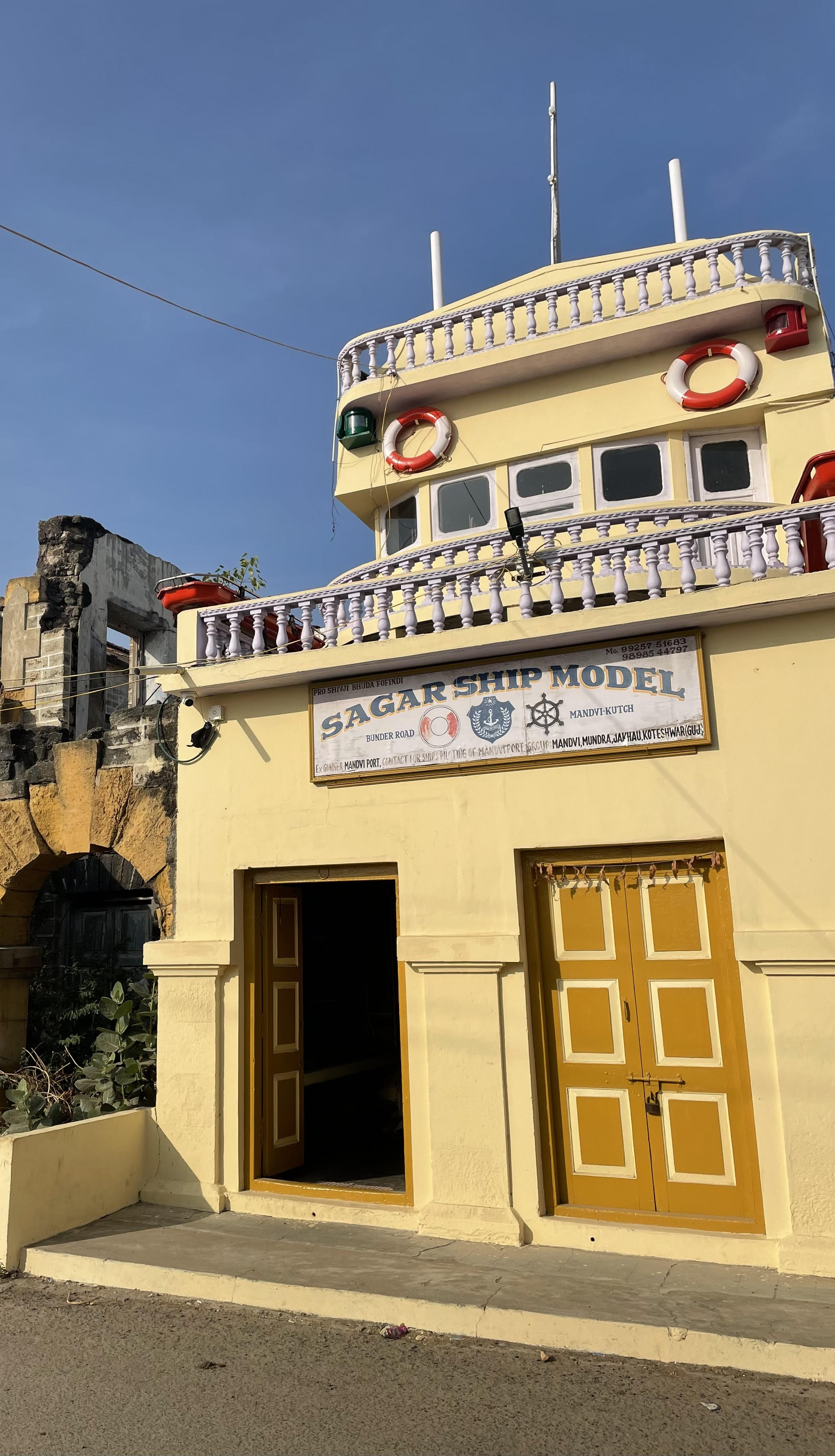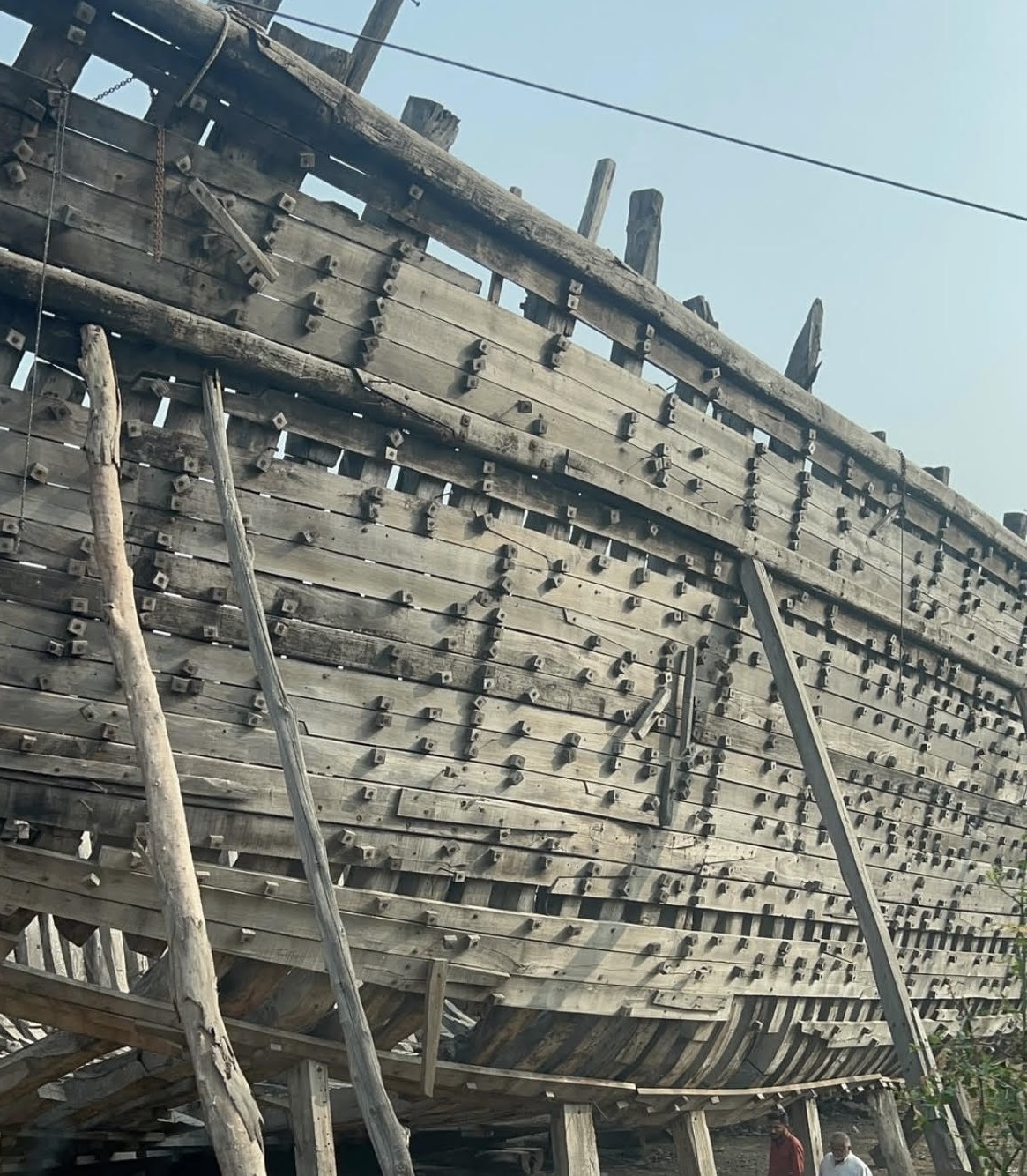Mandvi, 60 km from Bhuj, Gujarat, has a layered history; the burden of which is heavy to carry. The beach town holds a unique legacy of shipbuilding which is more than 400 years old.
The Kharva fisherman community of navigators (Malams) of Mandvi, documented the navigational manuals, detailing the voyages and navigation techniques in Malam Ni Pothi, in a pre-modern manuscript, now displayed at the National Museum. Kanji Malam, one among them, guided Vasco Da Gama on his legendary expeditions, but their hero’s name remained overshadowed by the Portuguese explorer.

Giant wooden boats called dhow, under different stages of making still dot the coastline of Mandvi—a testament to their history. And ingenuity-- to earn an edge above others; Kharvas developed the skill of building their own wooden ships for overseas trade which could carry 20 to 200 tonnes of goods—depending on their size. With experience, kharvas became maritime engineers—without a degree.
Founded by Maharao Khengarji I in 1580, Mandvi was a gateway to West Asia and Africa, buzzing with trade; located at the intersection of the spice route and the camel caravan route. At one time it was a busy port. The thriving Kochi Muziris trade of black pepper had a lot to do with boats made in Mandvi. A drive through the town reveals ruins of an aesthetically designed boundary wall, legacy of its rich past, now dilapidated and scattered across the town.
Dhows are made on scale; copying the models made by another set of skilled Kharva men. In a narrow lane along the coast, at Sagar Ship Model, one can see the marvellously perfected models of boats like Black Pearl, Flying Dutchman etc. Pioneered by Shivaji Bhai, model making is a means for survival. Tourists love the boat models like Black Pearl, made popular by movies like Pirates of the Caribbean. A good model sells for a couple of lakhs.

Shivaji Bhai says, building a ship costs between 8-10 crores; most men of Kharva community do not have the kind of money to invest; banks do not give loans for a floating wooden boat in the absence of guarantees. Models are cheaper to make and keep their skills alive. Shivaji Bhai has opened a school to help the craft survive, apart from running a museum of boat models.
Dhows never turn turtle, he claims. Though dhow making is not quantified and rationalized in a ‘structural’ sense; the boats are definitely sturdy—they keep sailing into the sea for years. The craftsmen handle wood almost like clay or paper, curving and twisting; even nut bolts and curves are made out of Saal wood, sourced from local forests, Malaysia, Taiwan and China.
Jigar Dhayani, an eminent member of the Kharva community says, they have started collecting Rs 50,000 each from the well- off community members; to invest in building smaller boats. The community’s presence in the ship building has become negligible over the years. Of the 200 boats sailing in waters presently, Kharvas own only one. The craftsmen of Ratdi and Mangrol, villages of Kharva community, have limited themselves to building ‘bari-barna’ (doors and windows).
Fear looms large that soon the community will not be able to build boats. “Building a boat needs hands-on training, men of my generation have some theoretical knowledge about building boats because we had heard about it from our grandparents but we lack practical knowledge.”
Despite adapting to a few modern tools like use of electric drills and fitting the boat with motors, they continued to use materials that are non-polluting. Yet they could not compete with boats that started to smuggle goods from the Middle East; their traditional route for trade.
Their boat making industry came to a point of no return when members of other communities who started smuggling gold and other electronic goods in the 80s became cash rich and made huge investments in real estate in Dubai. They could buy the dying business of dhow building. A few poor Kharva men became labourers of the new cash-rich dhow builders. Others took up sundry jobs or migrated to the Gulf.

Kharvas could not compete because they stuck to their traditional values. They are sea worshippers. Their history and culture are deeply intertwined with the sea—which they believe is a provider of their livelihood with a spiritual connection.
The second generation of the community is now trying to reclaim their lost tradition. Few of them have made money which they are investing in building small fishing boats—to begin with. They are also planning to start a school where the traditional skills could be imparted.
Emerging markets like tourism with demands for smaller boats are giving them hope—few are converting old rice boats of Kerala into houseboats with their sustainable practices.
By Vandana Shukla




